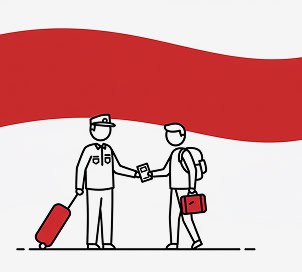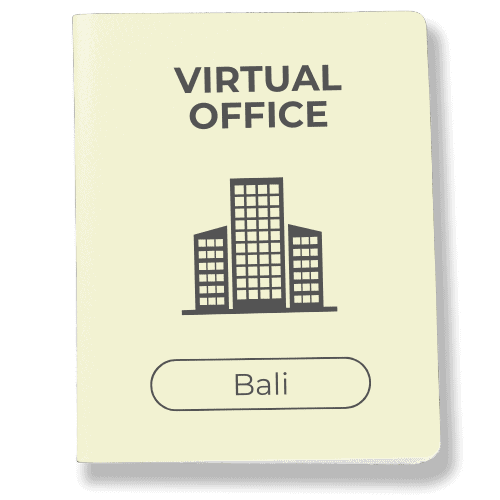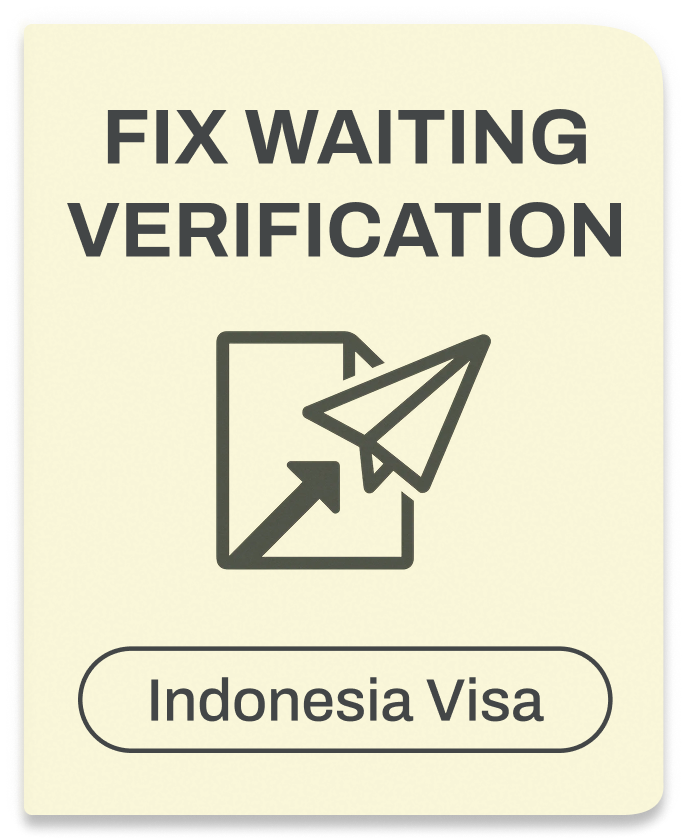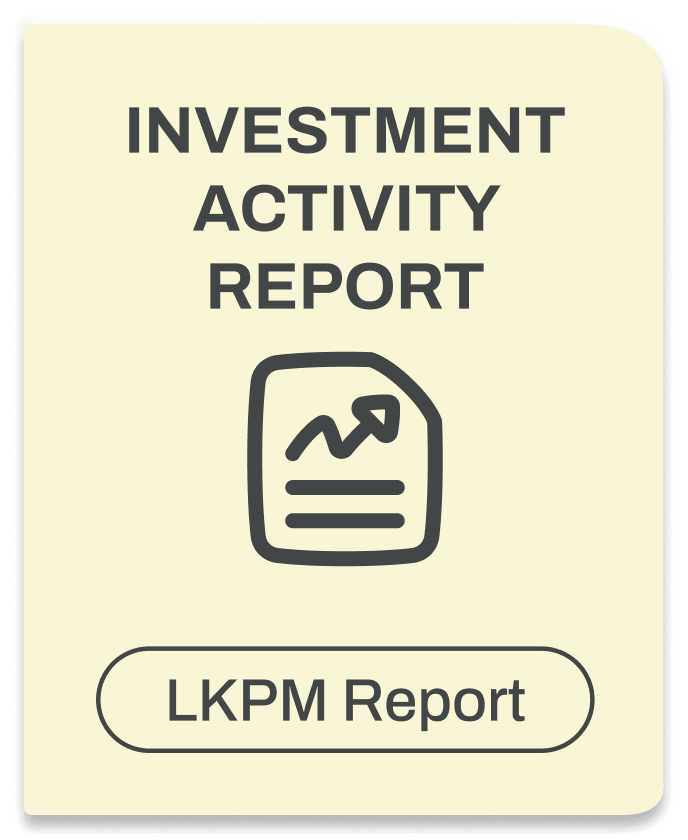Indonesia Household Import Regulations and Guide 2025
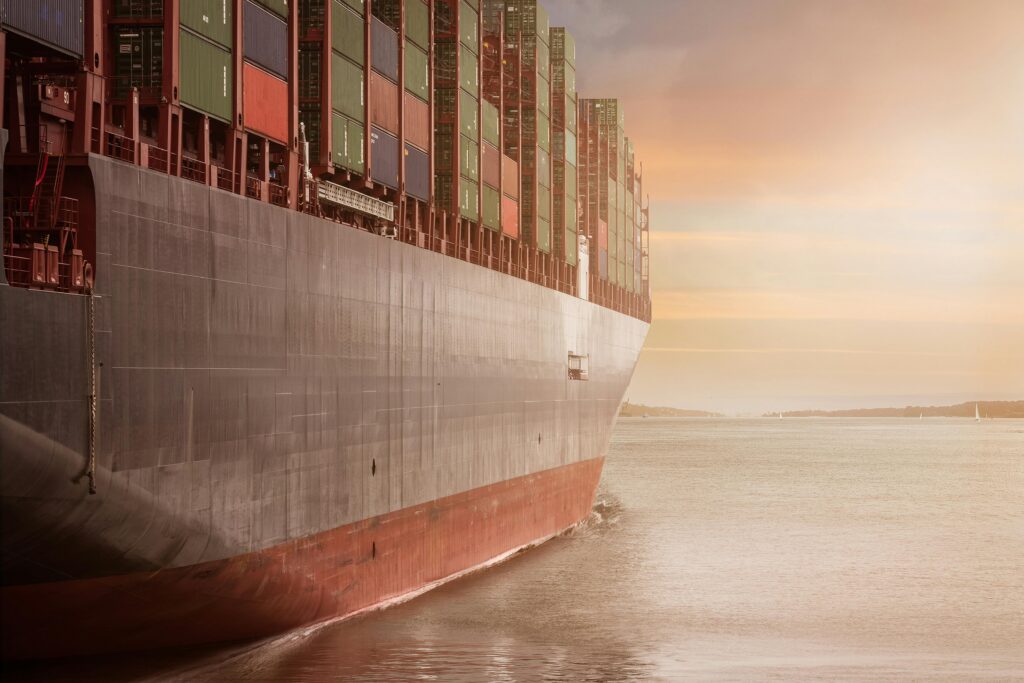
Let’s take a quick tour of how imports of household stuff and international trade have changed here over the past few years. Between 2023 and 2025, more people have been moving to Indonesia, whether for work, study, or retirement, and they’re bringing things like furniture, kitchen tools, electronics, and personal items.
The Ministry of Trade is a key authority involved in implementing and enforcing these import regulations alongside the legal and delivery team, including updating prohibited goods lists and issuing import licenses. Since late 2023, customs officers have been extra careful, checking that your goods really are personal items and not commercial stock.
By knowing where your goods come from and understanding the June 2025 update, you’ll be better prepared to follow the rules and save time (and money) when your things arrive.
Regulatory Framework & Recent Policy Updates
If you’re thinking about bringing household items into Indonesia, it’s super important to understand the rules. Customs in Indonesia have some strict guidelines, and they’ve been updated recently, including the requirement for necessary permits. Seeking legal advisory services is highly recommended to ensure compliance with the latest regulations and avoid potential issues. Working with legal professionals affiliated with the Indonesian Advocates Association (PERADI) can help importers navigate complex legal requirements and regulatory standards. Let’s break it down in simple terms.
Customs Rules for Personal Belongings
If you’re moving to Indonesia and want to bring your personal stuff with you, like furniture or kitchenware, here’s what you should know:
- Your items must be used and owned for at least one year.
- You’re allowed one shipment by air and one by sea.
- These shipments must arrive within 3 months of your arrival in Indonesia.
This means you can’t just ship boxes of brand-new stuff or send multiple packages over time. Customs wants to be sure you’re not sneaking in things to sell.
Also, you’ll need some paperwork:
- Your passport
- A letter of residence
- A police certificate (to show you’re clear)
- Your KITAS (a temporary stay permit)
- If you’re a retiree, a letter from your embassy can help too
For certain regulated items, managing product registration with authorities like BPOM or MoH is required, and this process must be done through an Indonesian legal entity.
New Rule from Mid-2025
In June 2025, things got a bit stricter. Now, unless you’re an employee, student, or officially moving to Indonesia, you might not be allowed to ship personal items here at all. These changes reflect updated import restrictions aimed at controlling the flow of personal goods into Indonesia.
That’s a big deal for remote workers or long-stay tourists. If you’re not working or studying here, your shipments could be blocked or sent back.
Customs Registration and Identification Number
If you’re importing goods like household items into Indonesia, things like your furniture, kitchenware, or personal belongings, you’ll need to go through customs registration and pay applicable customs duties. The first thing you need is a licensed customs broker. They’ll help you handle everything and use their own identification number to get your shipment cleared.
Your broker will take care of the paperwork using their Business Identification Number (NIB) and their Importer Identification Number (API). This is what customs needs to process your personal shipment. You’ll also need to give your broker copies of your passport and long-stay visa (like a KITAS or KITAP). In most cases, you don’t need your own Taxpayer Identification Number (NPWP) for household imports.
So, if you’re moving to Indonesia and want to bring your stuff, don’t worry—you don’t need to register like a company. Just work with a trusted broker who already has the right identification number, and your customs registration will go smoothly. That way, your shipment follows all customs regulations and arrives without any extra problems.
How to Import Household Goods to Indonesia
Step 1: Check Eligibility for Duty-Free Import
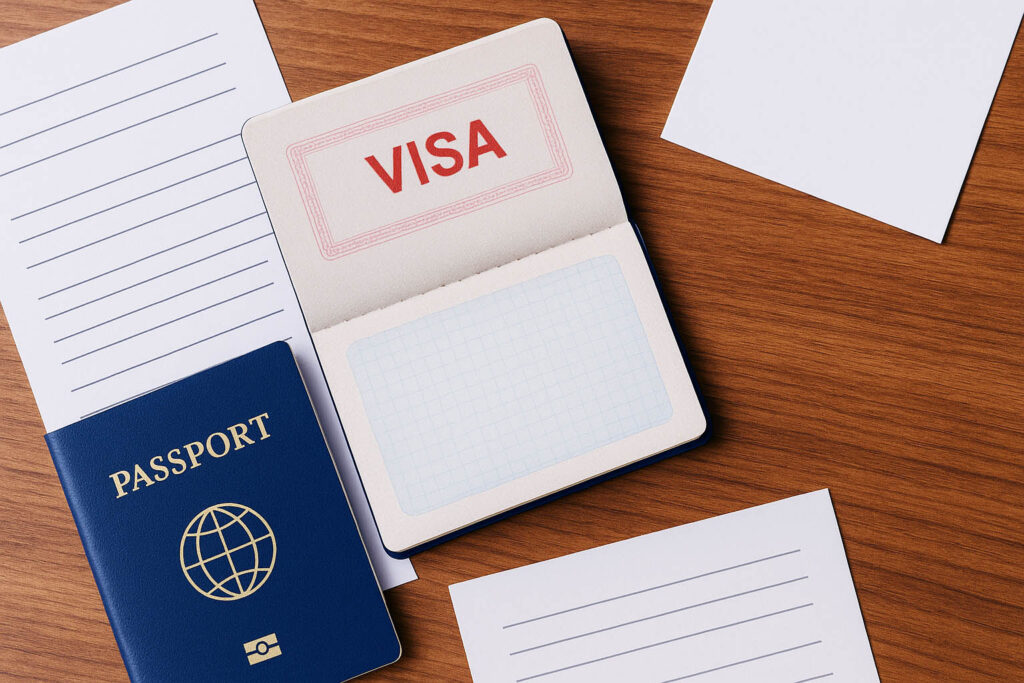
The first step is to determine if you qualify for the duty-free and tax-free import of your used household goods according to the Indonesian customs tariff book. Indonesia’s Ministry of Finance Regulation No. 25 of 2025 (PMK 25/2025) updated the rules (effective June 27, 2025) for personal relocation goods, replacing the previous Regulation No. 28/PMK.04/2008. Under the new regulation, import duty and VAT exemptions are available for those relocating their residence to Indonesia, provided you meet certain criteria:
- Returning Indonesian Citizens (WNI): Must have lived abroad for at least 12 consecutive months (working or studying overseas). This includes Indonesian students who completed studies abroad and Indonesians who worked or resided abroad and are now moving home.
- Foreign Nationals (WNA) with Long-term Stay: Eligible if you are moving to Indonesia for work or study with the proper visa/permit. For example, expats with a work contract (and a work permit/KITAS for ≥1 year) or foreign students enrolled in an Indonesian institution. These individuals are considered “relocating their domicile” to Indonesia.
Note: Under previous rules, foreign retirees or investors without a work/student permit were not eligible for duty-free status. The new regulation still emphasizes work/study, so retirees and other non-working foreigners should expect to pay import duties.
If you do qualify as above, your used household goods can be imported without paying import duty (and typically without 11% VAT or sales tax) as long as the goods are for personal use and not for resale. If you do not qualify (tourist visa holders, remote workers on short visas, retirees without a work permit), you can still import personal belongings, but you will have to pay duties and taxes, and the shipment will be treated as a normal import.
Tip: If you’re a returning Indonesian or eligible expat, contact the Indonesian embassy/consulate in your current country before moving to obtain a “Surat Keterangan Pindah” (Certificate of Moving) or similar letter. This document confirms you are relocating to Indonesia and lists your household goods.
Step 2: Decide Between Sea Freight and Air Freight
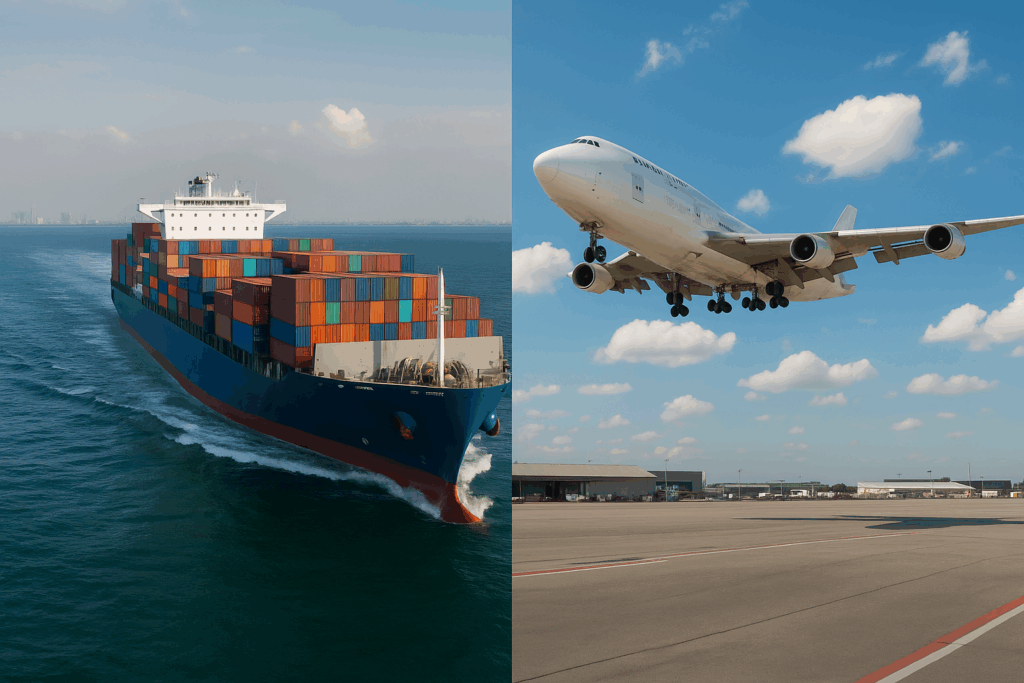
Next, determine how to ship your goods: by sea freight (using a container ship) or by air freight (using a cargo plane). The choice depends on volume, budget, and timing:
- Sea Freight: Best for large volumes (like an entire household or furniture). You can use a 20-foot or 40-foot container for a full household move, or send smaller loads as LCL (Less-than-Container-Load), sharing space with others. Sea freight is more cost-effective per cubic meter, but transit is slow (often 4,8 weeks depending on origin). Upon arrival, customs clearance for sea shipments in Indonesia typically takes about 6,7 working days if documents are in order. Be prepared for port storage fees if clearance is delayed (containers usually get a few days free, then daily charges apply).
- Air Freight: Suitable for smaller shipments (a few boxes of personal effects or urgent items). It’s much faster, flight transit in days, and customs clearance for air cargo usually completes in 2,3 working days. However, air cargo is expensive per kilogram, so it’s impractical for furniture or large appliances. It’s ideal if you’re moving for work/study and just need clothes, electronics, and personal items quickly. Air shipments arrive at an airport cargo terminal (such as Jakarta’s Soekarno-Hatta or Bali’s Ngurah Rai), where you or your agent will clear them.
Keep in mind you are generally allowed only one sea shipment and one air shipment duty-free per person under the relocation exemption. Plan accordingly: for instance, you might send a small air shipment of essentials (so you have them upon arrival) and a larger sea container with the rest, but both must arrive within the allowed timeframe (see Step 6 for timing details). If you need to send a second batch by sea, it should arrive within 3 months of the first batch to remain duty-free.
Tip: If volume is modest (just a few cubic meters), you can use LCL sea freight or even international parcel services, but ensure they will handle Indonesian customs clearance. Tiny shipments (valued under certain thresholds) may go through simplified courier processes, but larger household goods shipments will follow the full import procedure.
Step 3: Decide Whether to Use a Licensed Customs Broker (Agent)
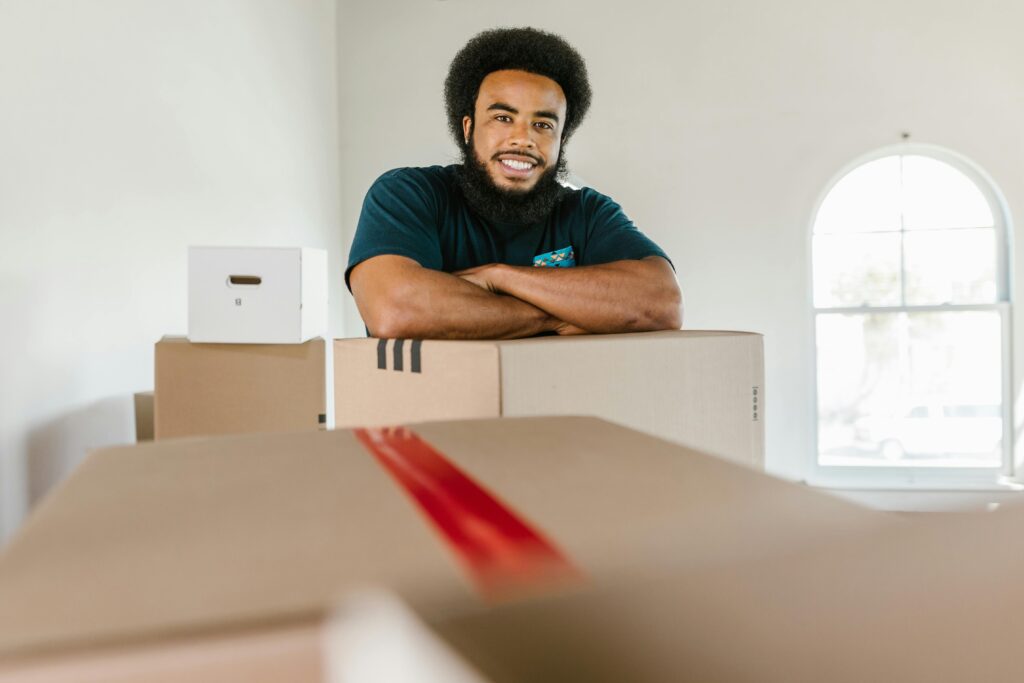
Indonesian customs clearance can be challenging to navigate alone, especially for seaport shipments. Many expats choose to hire a licensed customs broker or moving agent to handle the clearance and logistics. Here’s what to consider:
- Using a Broker/Moving Company: Highly recommended for most people, particularly if you have a full container or complex shipment. Reputable international movers (Asian Tigers, Crown, Santa Fe, Allied Pickfords, etc.) will pack your goods, ship them, and manage customs paperwork and inspection on your behalf.
You will need to provide them with all required documents (such as your passport, permits, and inventory) and typically sign an authorization letter allowing them to act as your agent. They will typically arrange delivery to your new home as well. The downside is cost; full-service international moves can be pricey (often thousands of dollars). Still, they reduce the hassle and risk of mistakes.
- DIY (No Broker): If you have a tight budget or a very small shipment, you can attempt to clear customs yourself, but be prepared for a bureaucratic process. You (the importer) will be responsible for submitting the import declaration forms, dealing with the shipping line and customs officials, and arranging pickup of the goods.
Step 4: Prepare Required Documents and Permits

Gathering the correct documents is critical. Having everything in order will smooth the import and avoid costly delays. Here’s what you will need:
- Passport: Your original passport (the main page) and copies, showing your identity and your entry stamp into Indonesia. Customs needs proof that you have arrived in Indonesia (since the owner must be in-country to clear goods). It’s common for the original passport to be submitted or shown to Customs; if using a broker, you’ll hand over your passport temporarily for them to process (they will return it after clearance).
- Indonesian Visa/Stay Permit: Proof of your legal stay status. For expat workers, this means your KITAS (Temporary Residence Permit) card or electronic ITAS showing a validity of at least one year. Also, your work permit (IMTA) from the Manpower Ministry is valid for 12 months. Both ITAS and IMTA must be for a full 12-month period (52 weeks); if they are shorter (a 6-month permit), you lose the duty-free privilege and customs will levy import taxes. For foreign students, a student KITAS or study permit is required (usually also one-year).
- Retirees on a retirement KITAS should have that card and related documents, but note that retirees are not exempt from duties (more on that below). Returning Indonesian citizens should have proof of their time abroad, such as a letter of completion of study or a letter from an employer abroad, and will use their Indonesian passport as ID.
- Certificate of Moving (Surat Keterangan Pindah): If you qualify for duty exemption (Step 1), obtain this letter from the Indonesian embassy/consulate before you ship your goods. It officially certifies that you are moving residence to Indonesia and lists your belongings. Customs requires this to grant the import duty waiver.
- Packing List / Inventory: A detailed inventory of all items in the shipment, in English. This list should enumerate boxes or packages and the general contents of each (“Box 12, Kitchen utensils and dishes”, “Box 5, Clothing”, “1 x Refrigerator (used)”, etc.). Do not list values on this inventory, for personal effects, customs prefers a non-valued packing list (they are concerned with contents, not prices, since duty-free eligibility doesn’t depend on value).
Make sure every item is included; items not on the inventory might be seized or dutiable. Number your boxes and cross-reference them to the list. It’s wise to note serial numbers for electronics on the list as well. Both you and the customs officers will use this document during inspection, so accuracy is important.
- Bill of Lading (B/L) or Air Waybill (AWB): These are the shipping documents provided by the freight carrier. For sea freight, the Bill of Lading issued by the shipping line is needed (original or telex release as applicable). For air freight, the Air Waybill number is used. Ensure the shipment is consigned in your name (matching your passport name) and labeled as “used household goods” or “personal effects” on the manifest.
If using a consolidator for sea freight (LCL), double-check with the forwarder that your name is clearly listed as the consignee; do not let them list a generic agent name, as that could complicate claiming the shipment. You may also need to show the arrival notice or manifest document that shows when the goods landed in Indonesia (your shipping agent or airline will provide this).
- Travel Documents: Some shippers include a copy of your flight ticket or boarding pass to Indonesia, and the Indonesian Customs declaration form you filled on arrival (the one for accompanied baggage). These help prove your entry date and travel history.
- Indonesia Residence Details: Once you have a local address, you might need proof of residence. For example, retirees are asked to provide a letter of local domicile from the neighborhood authorities (RT/RW letter) and a police registration certificate. While these are not required for everyone, it’s good to have any residence registration documents ready. It shows you have a place to stay in Indonesia where the goods will be used.
- Authorization Letter (if using a broker): A signed letter authorizing your broker or moving company to act on your behalf for customs clearance. Reputable movers will provide you with a template. This letter typically attaches a Materai (duty stamp) and copies of your passport/visa.
- Additional Supporting Documents: If you are an Indonesian citizen, prepare copies of documents showing your stay abroad ( diploma for students, company reference letter for workers). If you have any high-value items (like expensive artwork or large appliances), any proof of ownership might be useful in case customs inquires if they are new or for resale. However, generally used personal goods don’t need purchase receipts, just be ready to explain they’re used and yours.
Important: Timing of paperwork can be tricky. Often, your Indonesian KITAS and work permit might only be issued after you arrive and go through immigration procedures. It can take several weeks to get the physical KITAS card or e-document. Do not ship your goods too early such that they arrive before you have these documents.
Step 5: Packing Your Goods and Meeting Import Requirements

When packing your household goods, you must follow Indonesian customs rules on allowed and prohibited items, including food and beverage products . Proper packing and compliance will save you from headaches during inspection.
- Pack Only Used Personal Items: Indonesia requires that all imported household goods be owned and used by you for at least 1 year prior to import. This is to prevent people from sneaking in new merchandise. Avoid packing brand-new items in their original boxes; new articles are dutiable and will attract scrutiny.
If you must bring a newer purchase, remove any shrink-wrap, use it a bit, and list it on the inventory, but be prepared to pay duty on such items. Ensure everything looks obviously “used” (slight wear, no multiples of identical new gadgets, etc.).
- One of Each Appliance Rule: Customs generally allows only one unit of each major appliance or electronic device duty-free. For example, one refrigerator, one washing machine, one TV, one computer, etc., per household. If you bring duplicates (say two refrigerators or several TVs), the extras may be taxed or even rejected as “not normal personal use.”
An “unreasonable quantity” of any item can disqualify duty-free status and be deemed a commercial import. Essentially, bring only what a typical household would use. Don’t pack ten of the same kitchen appliance or a dozen identical electronics; customs will flag that. Household consumables (like cleaning supplies or food) should be limited to small amounts for personal use, or better yet, not shipped at all to avoid complications.
- Prohibited Items: Absolutely do not include any contraband or prohibited goods. Indonesian Customs will 100% inspect the shipment, and if they find banned items, you could face severe legal consequences.
Prohibited items include: firearms, weapons, ammunition, explosives, narcotics or illegal drugs (penalties are extremely harsh, up to the death penalty for drug smuggling), pornographic materials, printed matter or media deemed politically sensitive or inciting, and alcoholic beverages. Do not pack alcohol at all, not even a “small bar for personal use”; it’s not allowed in personal shipments and will be confiscated or cause big fines.
- Motor vehicles (cars, motorcycles, scooters) and their parts are strictly prohibited from being imported as personal effects. Even car/motorbike spare parts cannot be included. Essentially, stick to household and personal items only. If in doubt about an item, consult your mover or customs in advance.
- Wooden Items and Fumigation: Many household goods shipments contain wooden furniture or items made of wood. Indonesia, like many countries, is concerned about pests (like wood-boring insects). While the new PMK 25/2025 doesn’t forbid wooden furniture (indeed, furniture is explicitly allowed as personal effects), you should ensure all wood items are clean and preferably fumigated before shipping.
Ask your mover about fumigation; often, an official fumigation certificate or at least heat-treatment for wooden packing crates is required. If you use any wooden crates or pallets for packing, they must be ISPM-15 certified (stamped for pest control) or customs/quarantine may refuse them.
It’s not a bad idea to have furniture items sprayed or treated to avoid any issues on arrival (especially if coming from a country with wood pests). Also, outdoor items (like garden furniture, wooden tools) can be an issue; ensure they’re thoroughly cleaned (no soil or plant matter, to meet quarantine rules).
- Packing Method: Pack your goods securely for a long journey. Use sturdy boxes, plenty of cushioning, and seal everything well. If using a container, your mover will likely palletize or carefully stow furniture and boxes. If packing yourself, remember that containers can get jolted at sea and may also sit in humid, tropical port conditions while awaiting clearance.
Use plastic bins or moisture-resistant packing for anything that could mildew or get water-damaged. Clearly label each box with your name and a box number corresponding to the inventory. It’s wise to mark contents on each box (such as “Kitchenware” or “Bedding”) for easier checking.
Do not label boxes with someone else’s name or a store name. All items should appear to be yours. Using random reused boxes with foreign labels could confuse customs; if you reuse boxes, black out any old labels. Keep the labeling simple and in English or Indonesian.
- Used Electronics & Appliances: As mentioned, you can bring typical household electronics that have been used by you. List each major electronic item on your inventory (include brand and model if possible). If you have the original manuals or accessories, it’s fine to pack them together, but avoid shipping many new-in-box electronics.
Small personal gadgets (phone, camera, laptop) are usually fine in reasonable quantities (one per family member). Indonesia’s power is 230V/50Hz, so check if your appliances will work. You might not want to bring ones that aren’t compatible (this is more of a practical tip).
Customs may ask to see high-value electronics to verify they’re used. For example, a big flat-screen TV or high-end PC might catch their eye; they could assess a customs value on it if they suspect it’s new. However, if it’s clearly used and you qualify for duty-free, it should pass without duty. If you exceed the “one of each appliance” guideline, customs can impose import duty on the extra units or treat them as regular imports.
Duties for electronics can range roughly 5,20% (depending on the item) plus 11% VAT, so it can be costly. It’s often not worth shipping old, heavy appliances (like old fridges or ovens) unless they are specialty items. You can buy new in Indonesia with a warranty. Prioritize electronics that are important to you or expensive to replace (your computer or a specialized device).
- Furniture: You are allowed to import used furniture as part of your household move. Furniture such as tables, chairs, sofas, beds, wardrobes, and typical household furnishings are explicitly listed as duty-free household goods under the new rules. Make sure they are clearly for personal use (an entire household’s furniture is acceptable, but, for instance, 20 identical chairs or 5 of the same table might look like you’re importing for resale; avoid impractical quantities).
If your furniture is wooden, as noted, ensure it’s been treated for pests. Remove any cushions or fabrics that might be soiled (to avoid quarantine issues with soil/insects). Disassemble large furniture if possible to save space and reduce the risk of damage.
Step 6: Arrange the Shipment and Timing

With documents ready and goods packed, you’ll arrange the actual shipment and plan the timing of its arrival in Indonesia:
- Booking Shipment: If using a moving company, they will handle booking container space or air freight. If doing it yourself, you’ll need to contact a freight forwarder or shipping line. For sea freight, decide on FCL (full container load) or LCL. LCL can be cost-effective for smaller volumes, but note that LCL shipments often take a bit longer in customs because they must be deconsolidated at a warehouse.
You can send air freight as unaccompanied baggage through airlines or cargo companies. Ensure the shipment is consigned to your name and the destination is your port of entry (Jakarta for most sea shipments, or a main airport if by air, unless you arrange direct to another Indonesian port).
- Timing, 90-Day Rule: Plan the shipment’s timing so that it complies with Indonesia’s timing requirements for personal imports. Under the regulations, your goods should arrive no earlier than 90 days before your own arrival in Indonesia, and no later than 90 days after your arrival. Essentially, you and your goods should arrive roughly around the same time, with a three-month window on either side.
If the shipment arrives too early (more than 90 days before you enter the country), it will not be treated as “relocation goods” and could be refused duty-free status or even entry. If it arrives too late (more than 3 months after your arrival), you also risk losing the duty-free facility. In practice, most people aim to have the shipment arrive after they have arrived themselves (since customs clearance cannot start without the presence of the consignee in Indonesia).
A good rule of thumb: plan your ship departure such that the ETA in Indonesia is about 4,8 weeks after your flight arrival (for sea freight), giving you time to settle paperwork. For air freight, you might ship a week before you fly, so it lands just after you do.
- Multiple Shipments: You are allowed one sea and one air shipment duty-free. If you split your goods into two sea shipments (one container now, one later), note that the second shipment must arrive within 3 months of the first. Otherwise, customs may reject it as duty-free. They keep track of your entries; once you’ve used your one-time exemption, subsequent imports could be taxed. So consolidate as much as possible into the primary shipments.
- Shipment Origin: Ensure you ship from the same country where you’ve been residing abroad. The rules stipulate that the goods should come from your place of domicile overseas. Shipping from a third country (where you haven’t lived) could raise questions; for example, avoid buying goods in one country just to ship them from there unless it’s also your residence. Customs may request the export certificate or exit documents from the origin as proof.
- Transit and Insurance: Your shipment will take time in transit (sea can be several weeks). Purchase marine insurance for your goods, covering the entire journey door-to-door if possible. The insurance value doesn’t affect customs (since you’re not selling the goods), but it protects you in case of loss or damage. Keep in contact with your shipping agent to get updates on the arrival schedule.
- Arrival Coordination: As the goods approach Indonesia, prepare for the clearance process. If using a broker, inform them of the ETA so they can be ready. They will need copies of your documents in advance to prepare the import declaration.
If you’re handling it yourself, find out where the port or airport customs office is and their working hours. For a seaport, you’ll typically deal with the port’s Customs and Excise office (Kantor Bea Cukai) and possibly a Container Freight Station (warehouse) if LCL. For an airport, you’ll go to the cargo terminal customs area.
Also, ensure you are physically in Indonesia when the shipment arrives. Your original passport (with entry stamp) will likely be checked at customs; you cannot clear goods if you’re not present in the country. If you plan a trip out of Indonesia around the arrival time, assign a trusted person or agent and give them a power of attorney, but even so, issues can arise if the owner isn’t in the country.
Step 7: Customs Clearance Process in Indonesia

This is the most critical step: getting your goods through Indonesian Customs. We’ll break it into two scenarios: with a broker and without a broker, as the tasks you must do differ.
If Using a Customs Broker/Agent:
- Document Handover: Your broker will ask for all original documents: passport, KITAS, work permit, the embassy moving certificate, etc. They will make photocopies and prepare the customs forms. Usually, they will keep your passport during the clearance process (don’t worry, this is normal. They will return it once clearance is done, often the same day or within a couple of days after inspection.)
Make sure you’ve given them the original Bill of Lading (or express release confirmation) or Air Waybill and signed any needed forms. Without all the required documents in order, the shipment cannot be cleared and will incur storage fees while waiting.
- Customs Declaration (PIB/PIBK): The broker will lodge the import declaration electronically through the Customs system (often referred to as PIB, Pemberitahuan Impor Barang). For personal effects, a special code or form may be required (under older rules, it was referred to as BC 3.3 or BC 2.5 for personal goods).
The declaration will list all your items by general category with relevant HS codes and indicate that you are claiming duty exemption under the relocation regulation. Your agent is familiar with this process and will communicate with the customs officers reviewing the submission.
- Customs Review: Customs will review the documentation. They verify your eligibility (checking your permits, the embassy letter, how long you were abroad, etc.) They also check the inventory against prohibited/restricted lists. Remember, certain items can never be duty-free (vehicles, alcohol, etc. will be pulled out if they are attempted; hopefully, you didn’t pack any). If everything is in order, they will assign an inspection schedule.
- Physical Inspection: Indonesian Customs conducts a 100% physical inspection of household goods shipments. This means officers (sometimes with sniffer dogs, as shown in the image) will open the container or cargo pallets and go through the boxes.
Typically, the inspection is done at the port’s customs inspection area. If you have a full container (FCL), the container might be moved to an examination warehouse; you or your agent may need to be present to open boxes and assist. In many cases, the moving company’s staff will be there to handle unpacking/repacking for customs.
Expect them to open many boxes (if not all) and compare the contents to your inventory list. They may question any unusual items. Usually, for a well-documented shipment, this is routine; they just want to ensure there are no undeclared new goods or contraband.
Be aware: If customs finds undeclared or prohibited items (like a hidden firearm or a stash of new electronics), they can seize them and levy penalties. For minor issues (like a new item you forgot to declare), they might simply impose duty on it. Major infractions can result in the shipment being held or confiscated, and fines or worse. So transparency is key.
- Duty Assessment: If you are eligible for duty-free and all items fall under the allowed categories, you won’t be charged duty or tax. The customs officer will grant import duty exemption for your shipment. However, if they find any dutiable items, for example, a brand-new appliance still in its box, or quantities beyond personal use, they will calculate import duty and 11% VAT on those. The duty rate depends on the item’s HS code.
For instance, electronics might have around 10% duty; furniture might be 0,5%; but as a rule of thumb, customs often apply a flat rate (sometimes 7.5% for mixed personal shipments) plus VAT if treating it as a regular import. Your broker will usually negotiate or clarify this with the customs officials.
If you are not eligible for exemption (scenario of retirees or others), then the whole shipment is treated as a normal import: customs will appraise the value of all items and levy duties/VAT accordingly. They may refer to a valuation database for used goods or request a valuation. (You can estimate and declare a reasonable total value for used items in such cases, but be honest to avoid disputes.)
- Payment of Duties/Taxes (if any): Should there be duties to pay, your broker will inform you of the amount. Often, you’ll wire or hand over the money, and the broker will pay customs on your behalf (through a designated bank system). Make sure to get receipts or proof of any official payments. If you had no duties, this step would be skipped.
- Release Order: Once the inspection is passed and any dues are paid, Customs will issue a release document or stamp the clearance. At this point, your broker can take possession of the goods. For sea freight, if it is a full container, they will arrange to transport the container out of the port to your residence (usually, you get a short window to return the empty container to avoid extra charges). If LCL, the goods will be picked from the warehouse. For air freight, the agent will collect the goods from the airline’s cargo warehouse after showing the clearance. The broker will coordinate delivery trucking, etc.
- Receiving Your Goods: The mover will deliver the goods to your home. They may also provide unpacking services. You (and the broker’s team) should check off the inventory to ensure all boxes arrived. It’s a good idea to be present when customs breaks the seal during inspection, and certainly when the goods arrive at your door, to note any missing or damaged items for insurance claims. After everything is done, your original documents (passport, permits) will be returned to you. Also, keep a copy of the customs clearance document as it may be useful for future reference (especially if you plan to re-export anything later).
If Clearing Customs Without a Broker:
If you decide to go the DIY route, the overall steps are similar, but you personally must do the legwork:
- Collect Arrival Documents: When your ship or flight arrives, you’ll receive an Arrival Notice from the shipping agent or airline. For sea freight, you must usually go to the shipping line’s office (or their agent at the port) with your Bill of Lading to get a Delivery Order (DO). This DO (after you pay any local port fees) allows you to take the container or LCL goods out of the port once customs is cleared. For air freight, the AWB and arrival notice will allow you to go to the airline’s cargo section to initiate clearance. Obtain these first.
- Fill out the Import Declaration: Head to the Customs office at the port or airport. Inform them you have personal effects (barang pindahan) to import. Under the new regulation, there may be a dedicated counter or officer for personal removals. You will need to fill in the customs import declaration.
If available, ask for the personal effects declaration form (in some places it’s a simplified form for used household goods). If not, you may need to fill the standard PIB form. Provide all the data: your personal details, passport number, KITAS number, etc., and attach your inventory. Show them your embassy moving certificate and any letters that prove you qualify for duty-free. This will ensure they apply the correct regulation (PMK 25/2025) to exempt duty.
- Inspection: You (or someone representing you) must be present at the inspection site. If your goods are in a container, the port will position the container in the inspection area. You’ll likely have to hire port labor to help open it and unpack boxes for inspection (often, there are port labor services available. Inquire about the process, as sometimes you purchase a “stakeholder card” or pay a fee to get laborers access).
For LCL or air shipments, your goods will be in a warehouse; you’ll be escorted to them for inspection. Provide the customs officer with your inventory and then open up the boxes as directed. They will inspect as described earlier. Answer any questions truthfully. If language is a barrier, having an interpreter is useful. Once they are satisfied, they will tally up any dutiable items.
- Duty Payment: If you owe any duties or taxes, the customs officer will issue an assessment (a billing note). Take this to the payment counter or designated bank window (usually within the customs facility). Pay the amount due in rupiah. Keep the receipt.
- Final Clearance: With the inspection complete and any duties paid, customs will stamp or issue a Letter of Release (Surat Pengeluaran Barang) or similar document. This is your golden ticket to retrieve the goods. If a container coordinates with the port to pull the container out, you’ll give the port authority the customs release,e and they will allow the container to exit the terminal. For an LCL/air shipment, show the release to the warehouse to collect your packages.
- Transport and Delivery: Now you need to actually get your items home. For a full container, you’ll need to hire a trucking service if you haven’t already. Often, even DIY importers will engage a trucking company at this stage to pick up the container from the port and deliver it to your address (make sure they handle the return of the empty container within the free period, typically a few days, to avoid extra charges). For LCL or air, if it’s just a few boxes, you might rent a van or pickup truck to haul them. Inspect your goods and sign off the handover from the warehouse or port.
- After Clearance: Keep your documentation file, including the import declaration, the packing list with customs stamp, duty payment receipts, etc. This proves your goods were legally imported. If later on an official ever questions, you have the records. Also, having the list is helpful for home insurance or if you eventually leave Indonesia and want to export the items back.
Common Mistakes and Pitfalls to Avoid
Importing household goods into Indonesia involves many steps. Avoid these common mistakes to save time, money, and stress:
- Missing the 90-Day Window: Timing is everything. Don’t ship too early or too late. If your goods arrive beyond the 90-day post-arrival limit (or before you arrive), you risk losing duty-free privileges and even having the shipment rejected.
- Not Having Proper Documentation Ready: A very frequent issue is shipments arriving while the owner’s paperwork is incomplete. So, don’t ship until you have (or are about to have) all required permits. If unavoidable, be prepared to pay import duty as a fallback or negotiate an extension with customs (not guaranteed). Another documentation mistake is not getting the embassy moving letter, without it, customs may not acknowledge your duty-free status at all. Many people simply aren’t aware of this requirement; make sure you get that letter.
- Including Prohibited or Sensitive Items: It should go without saying, but do a final sweep to ensure no banned items are in your shipment. Even a decorative firearm replica or a forgotten liquor bottle can cause big delays and fines. Indonesian customs scans and often uses dogs for drugs/explosives. You will get caught if you try to hide contraband. The penalties are severe for things like drugs or undeclared firearms. It’s just not worth it.
- Packing Too Much “Stuff”: Some people make the mistake of shipping their entire household without filtering, and end up with a huge volume of items that incur large shipping and handling costs, only to find out half of it is not needed in Indonesia. Remember, many everyday items can be bought locally at reasonable prices (especially kitchenware, basic furniture, bedding, etc.).
- Underestimating Import Costs and Port Fees: Even if you qualify for duty-free import, it doesn’t mean the import is cost-free. You will still face various port charges, handling fees, and possibly agent fees. For example, ports charge storage and demurrage if your clearance takes time. There are fees for unloading the container, trucking, warehouse handling, documentation, etc. If using a mover, these might be included in your quote, but if DIY, be prepared to pay these separately.
Always have a financial buffer for unexpected costs (a good rule is to budget a few hundred dollars extra). One common mistake is not budgeting for the import VAT, while personal move items are duty-exempt, if you’re not eligible for the facility or if you have some new items, you could get a bill for 11% VAT on the estimated value. This can be substantial if you ship a lot.
- Lack of Communication and Follow-up: Once your goods are en route, stay in touch with your shipping agent or mover. Sometimes, paperwork issues can be solved in advance. For instance, if Indonesian customs queries something about your documents, addressing it quickly (sending an additional letter, etc.) can prevent delays.
Always get tracking info and know your container or AWB number. If doing it yourself, regularly check the shipment status and be proactive Don’t assume things will automatically move; call the port or airline cargo to verify if your shipment is ready for clearance.
- Misdeclaring or Concealing Items: Do not attempt to lie on your inventory or hide items in your shipment. Customs inspectors are experienced, if they find undeclared goods (like a new PlayStation or an undeclared drone), it not only incurs duty but also breeds mistrust, leading them to scrutinize everything more closely (delaying clearance). Worst case, they can seize the item and fine you. It’s better to declare items and pay a bit of duty than to risk confiscation.
- Not Being Present or Accessible: Ensure you (or your authorized representative) are available during the clearance period. If customs requires your presence or an interview, and you’re off on vacation, your shipment will sit. Also, if your phone or email changes, update your agent. Many delays happen simply because an agent or customs couldn’t reach the owner for a question or to confirm delivery.
- Ignoring Latest Regulations: Customs rules can change. We have used the latest regulations as of 2025 in this guide. Still, it’s wise to double-check if there have been any new circulars or updates from Bea Cukai (Customs) right before your move.
For instance, tax laws or thresholds might adjust. Stay updated via official sources, Visa-Indonesia News, or ask your mover. As of mid-2025, the PMK 25/2025 is the governing rule which clarifies the process and aims to improve services. Knowing this, as you do now, will help you speak the same language as the customs officers if any issues arise.
By avoiding these pitfalls, you greatly increase the chances of a smooth import experience. Many people successfully bring in their used household items every year, with proper planning, you can too.
Ready to Apply or Extend Your Visa?
Let our visa specialists handle your application.

